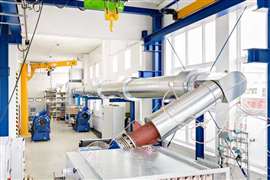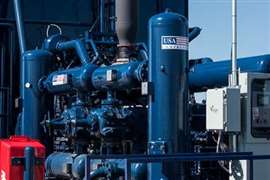Variance Of Vibration And Pulsation In Identical Compressors
September 17, 2016

Understanding twins with different personalities
By Francisco Fierro and Chester Whinery
High vibration amplitudes are often a result of matching a mechanical response frequency with an excitation frequency. When installing identical compressor packages, it is assumed the excitation amplitudes and frequencies will be very similar. However, variations in inlet conditions, compression ratio, running speed, or gas composition can have a noticeable effect on the excitation frequency and amplitude.
For instances where the excitation frequency does not match any mechanical response frequencies and avoids high energy compressor running orders, the difference in the excitation energy is likely not noticeable. However, when coincident with a mechanical response, the resulting vibration is noticeably different as the amplification factor of the response highlights the differences in the units.
Similarly, the mechanical response frequencies in two identical packages can vary due to installation differences such as clamp tightness, clamp location, clamp type, etc. Some of these variations may result in minor shifts in responses, but other variations can lead to significant shifts which, if near excitation sources, can result in a coincidence and high vibration.
Read the full story in the Aug-Sept. issue of COMPRESSORtech2.
MAGAZINE
NEWSLETTER

CONNECT WITH THE TEAM








